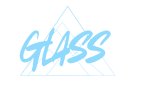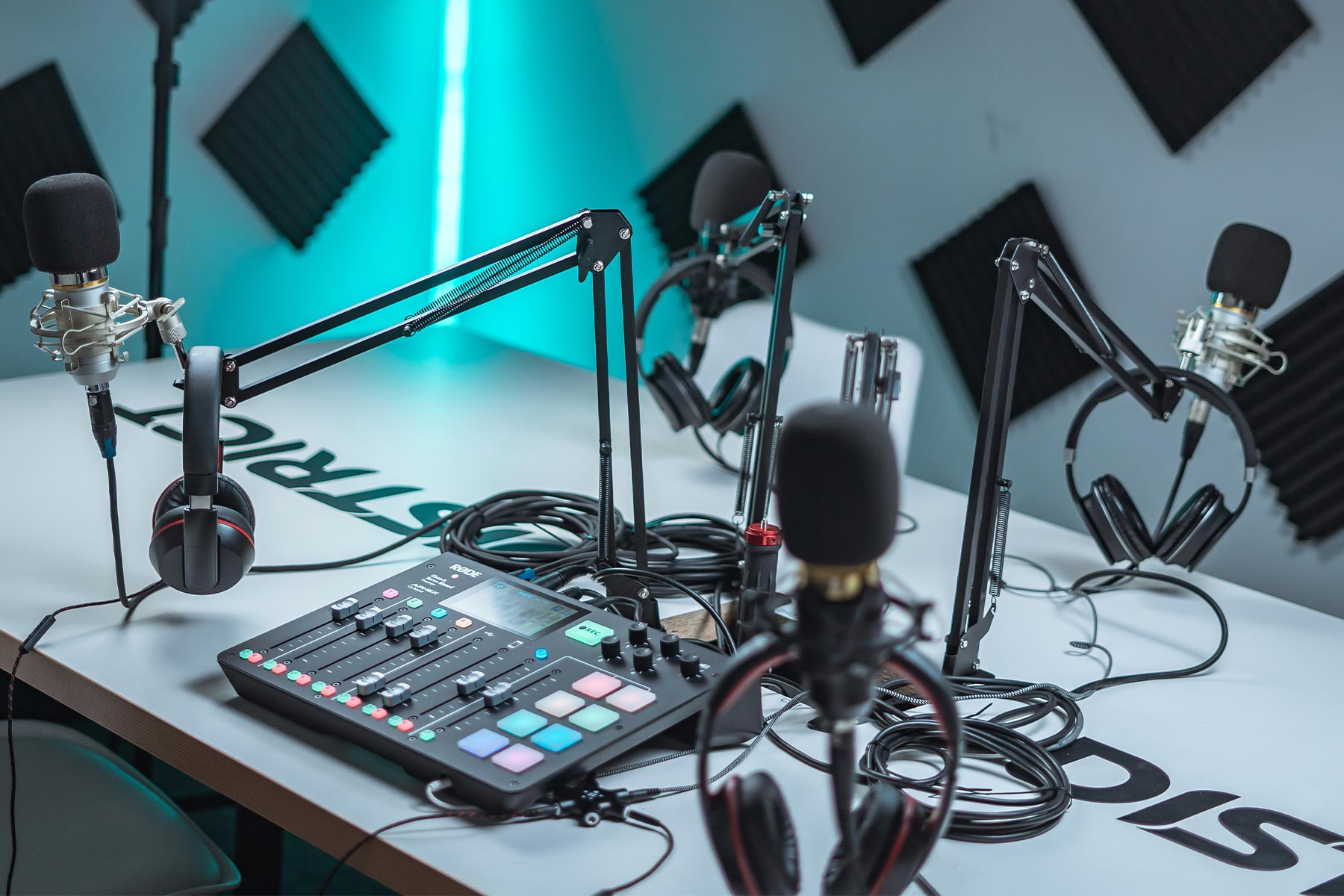Building the Perfect Audio Recording Studio in 2025 Starts with the Right Gear
Whether you’re recording a podcast, cutting vocals for a chart-topping single, or tracking instruments for a cinematic score, your creative output is only as good as the tools you use. In the world of sound, clarity, consistency, and control matter more than ever. And in 2025, with new advancements in gear and tighter quality standards in audio distribution, it’s no longer optional to have the right equipment, it’s essential.
At My Glass Studios, we’ve helped artists, producers, and content creators build studio environments that inspire and deliver results. This checklist is more than just a list of items—it’s a curated guide for any serious audio professional ready to take their craft to the next level.
Core Studio Audio Recording Components Every Professional Needs
These are the foundational elements that no recording setup, home or commercial, should be without.
Audio Recording Interface — Your Sound Gateway
The audio interface converts analog signals into digital audio and vice versa. In 2025, low-latency, high-resolution interfaces are non-negotiable.
Top Picks:
- Universal Audio Apollo Twin X (for pristine preamps and built-in DSP)
- Focusrite Clarett+ 4Pre (affordable and clean with multiple I/O options)
- RME Babyface Pro FS (rock-solid drivers, excellent for mobile setups)
Pro Tip from My Glass Studios: Invest in an interface that matches your long-term input/output needs. You don’t want to upgrade every six months.
Studio Monitors — Hearing the Truth
Forget consumer speakers. Professional studio monitors are designed to reproduce sound as neutrally as possible so you can make accurate mix decisions.
Best Choices in 2025:
- Yamaha HS8 (classic flat response)
- Adam Audio A7V (precision with dynamic range)
- Genelec 8030C (compact but detailed)
Don’t forget monitor isolation pads or stands to reduce vibrations and improve accuracy.
Microphones Capture with Character
No two mics are created equal. The right microphone depends on your voice, the room, and what you’re recording.
Must-Have Types:
- Large diaphragm condenser (e.g., Neumann TLM 103) — for vocals, acoustic guitar
- Dynamic microphone (e.g., Shure SM7B) — for podcasts, rap vocals, or untreated rooms
- Small diaphragm condenser (e.g., Rode NT5) — for drum overheads, strings
At My Glass Studios, we often pair the mic with a preamp that complements its tone to create signature vocal chains.
Headphones Critical Listening, No Compromises
You need two types of headphones in a professional setup:
- Closed-back (for tracking, live recording)
- Open-back (for mixing, sound design)
Trusted Options in 2025:
- Beyerdynamic DT 770 Pro (closed)
- Sennheiser HD 650 (open)
- Audio-Technica ATH-R70x (versatile and accurate)
The Acoustic Environment — Treat the Room, Not Just the Gear
One of the most overlooked elements in studio building is acoustic treatment. Without a properly treated space, even the best gear will underperform.
Acoustic Panels & Bass Traps
Start with:
- Broadband absorption panels at first reflection points
- Bass traps in all room corners
- Optional: ceiling clouds for larger spaces
Brands like GIK Acoustics or Primacoustic offer effective, professional-grade options.
At My Glass Studios, every room is acoustically treated to eliminate colorations and enhance the accuracy of both monitoring and recording.
Diffusion for Larger Studios
In medium to large studios, diffusion panels scatter sound evenly to avoid slapback and echoes, improving natural ambiance without deadening the room entirely.
Must-Have Accessories and Audio Recording Studio Tools
It’s easy to obsess over gear and overlook the small but crucial tools that keep your workflow smooth and efficient.
Mic Stands That Don’t Sag
Look for sturdy stands with:
- Boom arms
- Counterweights
- Shock mounts and pop filters
Brands like K&M and Hercules are studio favorites for their durability and adjustability.
Cables Matter More Than You Think
Balanced XLR and TRS cables with solid shielding protect against hum, buzz, and signal loss. Mogami, Canare, or custom hand-soldered options are studio-grade investments.
Power Conditioning & Surge Protection
Clean power is key for preserving expensive gear. A power conditioner like the Furman M-8×2 ensures consistent voltage, while protecting against surges and noise interference.
The Role of Software in Professional Audio Recording
Hardware gets you so far, but software is what brings your sound to life. Every professional studio should have a digital audio workflow that fits their creative and technical goals.
Digital Audio Workstations (DAWs)
Your DAW is the brain of your setup.
Industry Standards in 2025:
- Pro Tools Ultimate — for multi-track studio sessions
- Ableton Live 12 — for electronic music production and performance
- Logic Pro X — for Mac-based composers and creators
At My Glass Studios, we use a hybrid workflow with Pro Tools and Logic depending on project type.
Plug-ins and Effects Suites
High-quality plug-ins allow you to shape sound precisely. Must-haves include:
- EQs and Compressors (FabFilter, UAD)
- Reverbs/Delays (Valhalla, Soundtoys)
- Virtual instruments (Kontakt, Spectrasonics)
Tip: Start small, master what you have, and only expand when necessary. Plugin bloat is a real creativity killer.
High-Performance Computers for Audio Recording Production
A sluggish system can ruin a perfect take. That’s why professional studios invest in workstations built for audio.
Minimum System Specs for 2025 Studios
- CPU: Apple M3 or Intel i9/Ryzen 9
- RAM: Minimum 32 GB for large sessions
- Storage: SSDs only — ideally 1 TB+ for OS and project files
- Interface: Multiple USB-C/Thunderbolt ports
DAW stability and plugin performance rely on hardware/software synergy, so choose your platform carefully.
Backup, Storage, and Data Management
Redundancy is Protection
Use a 3-2-1 backup strategy:
- 3 copies of your work
- 2 types of storage (local + external)
- 1 off-site or cloud solution
Tools to consider:
- G-Technology or LaCie drives
- Backblaze or iDrive for cloud backup
My Glass Studios has helped rescue many clients’ careers with solid data practices don’t wait for a crash to start protecting your sessions.
Powerful Add-Ons for Pro-Level Recording
Once your core setup is ready, consider these upgrades to boost your workflow and sonic control.
Outboard Gear (Analog Flavor)
- Channel strips (Avalon VT-737sp)
- Tube preamps (Warm Audio WA-273)
- Bus compressors (SSL G-Comp)
These bring warmth, color, and dimension that software sometimes can’t replicate.
MIDI Controllers & Control Surfaces
For producers and composers, a good controller improves speed and expression:
- Akai MPK Mini (budget, compact)
- Arturia KeyLab (synth-like control)
- Avid S1 Control Surface (for tactile DAW mixing)
How My Glass Studios Helps Artists Set Up Professional-Grade Spaces
At My Glass Studios, we don’t just engineer sound, we engineer environments where creativity flows and quality thrives. Whether you’re a solo artist building your first recording setup or a label executive investing in studio infrastructure, our experts help guide:
- Gear selection and purchase planning
- Room design and acoustic treatment
- Recording workflow optimization
- Full studio builds from scratch
From custom vocal booths to mixing suites, our goal is to make professional audio accessible, scalable, and inspiring.
Common Mistakes to Avoid When Building a Studio
Overbuying and Underusing Gear
It’s tempting to buy every trending microphone or plugin, but unused gear is wasted money. Focus on quality over quantity.
Ignoring Acoustics
Even the best mic can sound poor in an untreated room. Budget 10–20% of your setup costs for treatment.
Skipping Monitoring Calibration
Out-of-the-box monitors may not reflect your actual mix. Use room correction software like Sonarworks to fine-tune your listening space.
Final Thoughts: Build the Audio Recording Studio That Works for You
There’s no one-size-fits-all setup. The best professional audio recording equipment is the gear that suits your workflow, space, and creative direction.
Use this checklist as a roadmap, but customize it to match your style, genre, and goals. Whether you’re recording vocals in a home booth or mixing a feature-length score in a treated suite, the right gear doesn’t just capture sound, it unlocks potential.
At My Glass Studios, we’re here to help you do just that. From consultation to full builds, we bring the expertise, honesty, and craftsmanship needed to build recording environments that elevate your sound, and your vision.

